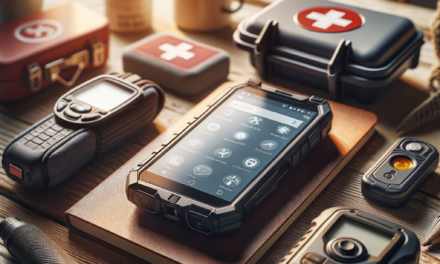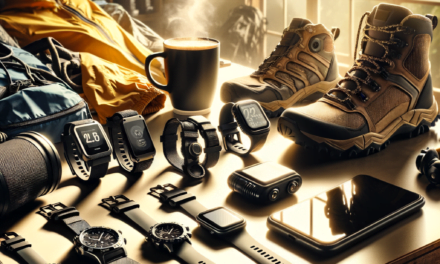Introduction
Staying on top of your health and fitness is a year-round commitment that can be greatly enhanced with the help of technology. Wearable tech for fitness and health monitoring has become an integral part of many women’s wellness routines. These gadgets not only track your activity levels but also provide insights into your overall health, helping you make informed decisions about your lifestyle. Whether you’re looking to maintain your summer shape during the colder months or get a head start on your spring fitness goals, wearable tech can be your ally in achieving and sustaining wellness.
Step 1: Assess Your Needs
Before diving into the vast market of wearable tech, it’s important to understand what you need. Are you focusing on step counting, sleep tracking, heart rate monitoring, or GPS for outdoor activities? Make a list of the features that are most important to you and your fitness goals.
Step 2: Research the Options
Once you have a clear idea of what you’re looking for, start researching the different types of wearable tech available. Consider factors like battery life, water resistance, compatibility with your smartphone, and the user interface. Read reviews and watch tutorials to get a feel for how each device works. Here are some options to consider:
- SHANG WING Smart Watches for Women – A fitness watch with a pedometer, heart rate monitor, and blood oxygen sleep monitor, waterproof IP68 for Android iOS.
- TOOBUR Fitness Tracker Watch – Includes heart rate, blood oxygen, sleep tracker, IP68 waterproof, and pedometer step counter with 14 sports modes compatible with Android iOS.
- Ddidbi Smart Fitness Watch for Women – Features a 1.85″ HD touch screen, 112 sport modes, and IP68 waterproofing.
- IMFRCHCS Smart Watch for Women Men Kids – Comes with a 1.47″ full screen, 24/7 heart rate sleep monitor, and 130+ sport modes.
- HONOR Smart Band 7 – A sports activity tracker with blood oxygen monitoring and a 1.47 inch AMOLED screen.
- TOOBUR Smart Watch for Women with Alexa Built-in – Features a 1.95″ display, IP68 waterproofing, and 100 sport modes.
- IOWODO Smart Watch for Women – A fitness tracker with heart rate, blood oxygen, sleep monitor, and custom dials.
Step 3: Make Your Purchase
After narrowing down your choices, it’s time to make a purchase. Look for deals or discounts, especially during seasonal sales, and don’t forget to check if your health insurance offers any incentives for using fitness trackers.
Step 4: Set Up Your Device
Once you have your wearable tech, take the time to set it up properly. This may include downloading an app, creating an account, and customizing your settings. Make sure to calibrate the device if necessary to ensure accurate readings.
Step 5: Integrate It Into Your Routine
For your wearable tech to be effective, you need to use it consistently. Find ways to incorporate it into your daily routine, whether that means wearing it all day or just during workouts. Set reminders or alarms if your device has those features to help keep you on track.
Step 6: Analyze Your Data
Regularly check the data collected by your device to monitor your progress. Look for patterns in your activity levels, sleep quality, and other health metrics. Use this information to adjust your fitness and wellness plans accordingly.
Step 7: Stay Updated
Technology is always evolving, so keep your device’s software up to date to benefit from the latest features and improvements. Also, stay informed about new wearable tech that might better suit your evolving needs.
Tips and Advice
- Wear it correctly: Ensure the device is worn as the manufacturer recommends for accurate data.
- Sync regularly: Sync your device with its companion app to avoid losing data and to get the most detailed insights.
- Charge it: Develop a charging routine so your device is always ready to go when you are.
- Privacy settings: Be aware of the data your device is collecting and who has access to it. Adjust your privacy settings to your comfort level.
Common Mistakes to Avoid
- Avoid getting overwhelmed by too much data; focus on the metrics that matter most to your goals.
- Don’t ignore the importance of rest; some wearables can help monitor your recovery and stress levels.
- Resist the urge to compare your data with others; wearable tech is a personal tool for your individual health journey.
Conclusion
Embracing wearable tech for fitness and health monitoring can be a game-changer in your wellness journey. By selecting the right device, integrating it into your daily life, and using the data to inform your health decisions, you’ll be well on your way to a healthier, more active lifestyle. Remember, the most important aspect of any fitness journey is consistency, and with wearable tech, you have a personal health coach with you at all times. So, strap on that gadget and take control of your health today!










